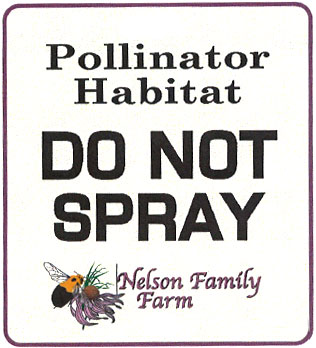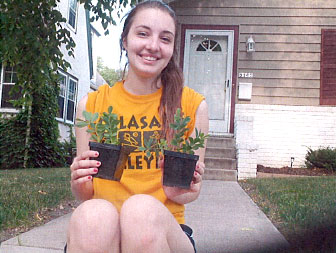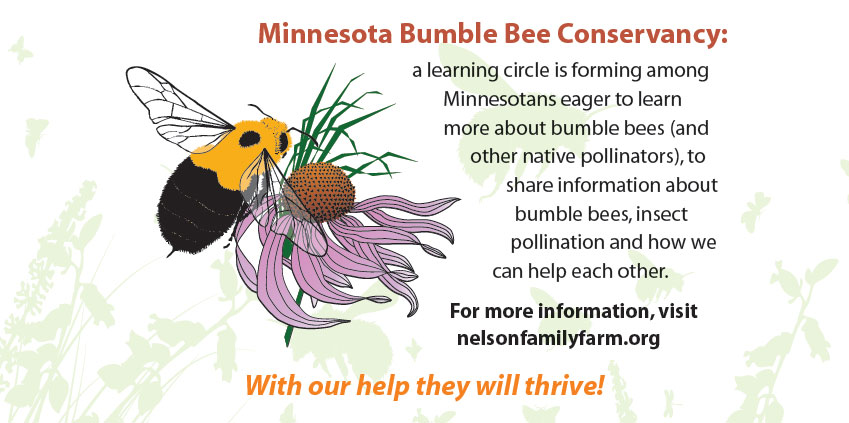Learning Circle
 Nurture our Bumble Bees
Nurture our Bumble Bees
Protecting Pollinator Health “Bee” Careful
Many modern herbicides are effective in eliminating noxious weeds and pests but are extremely detrimental to Bumble Bees. We continuously seek less harmful alternatives. When using chemicals we apply then properly under optimal conditions. We discuss our garden with our neighbors and invite their cooperation. When appropriate we post our pollinator sensitive areas with explicit “Do Not Spray” signs.
Periodically we have an “Open House” to showcase our gardens and the benefits of pollination services. When people understand our objectives, they will often harmonize their activities for the benefit of all.
 Nurture our Bumble Bees
Nurture our Bumble Bees
They are very beneficial!
By the beginning of this century, the federal government will find it necessary to protect bees and other pollinating insects by planting “insect gardens” across the country, and “entomologists will be as much or more concerned with the conservation and preservation of beneficial insect life as they are now with the destruction of injurious insects.”
Edith Patch (1876-1954) Degree U of Minnesota 1901, PhD 1911, Cornell University, Educator at the University of Maine
Nurture our Bumble Bees
Help them with a season-long progression of native flowering plants
Native plants, not cultivars are most likely to have sufficient store of pollen (protein) and nectar (carbohydrates) to sustain bumble bees. Bumble bees are not aggressive and rarely sting. The bumble bees have strength, agility, and ability to work in more varied weather. Pollination services provide resilience to natural areas and greater productivity in our fruit and vegetable crops.
Bumble bees support and magnify our work as gardeners and ecology minded citizens.
After an inventory of existing vegetation, take actions to ensure that we will have many flowers with overlapping bloom times. This provides bees with a continuity of food resources throughout the season. Plant forbs in large patches and massed swirls to allow bees more efficient access to blooming plants. This will allow the bumble bees to cross pollinate within a species.





